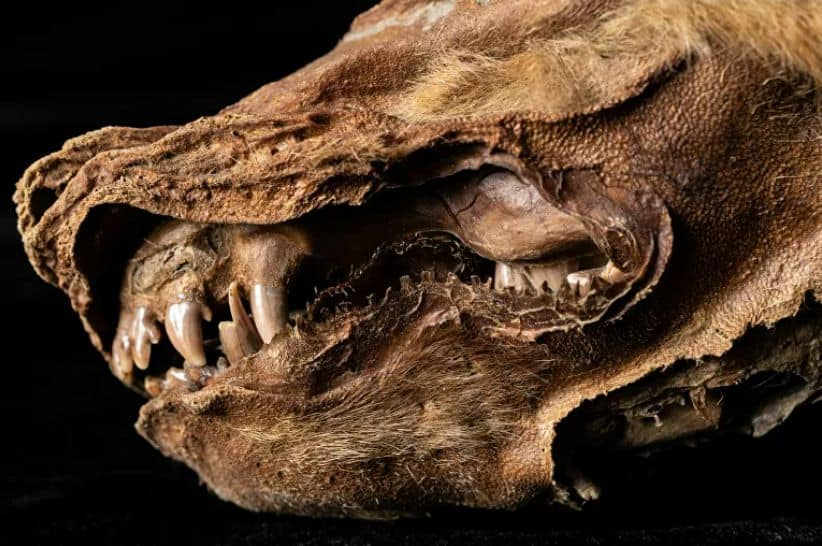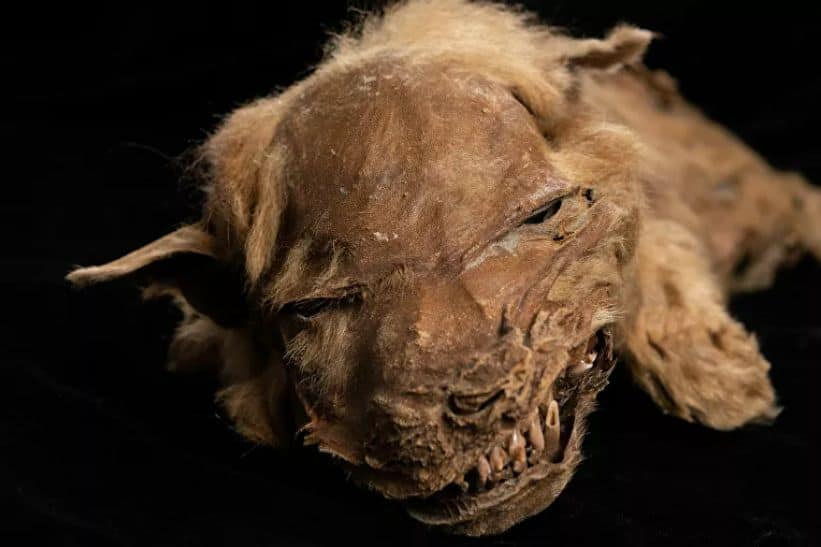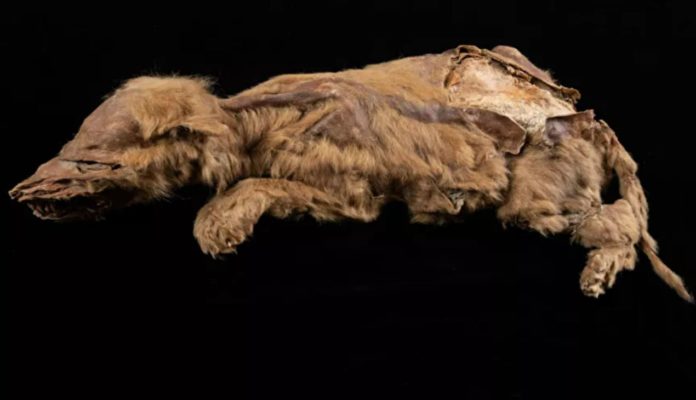In July 2016, a gold-seeker stumbled upon the mummified body of a wolf pup while firing a water cannon on a permafrost wall in Canada’s Yukon Territory. Scientists eventually provided details about the animal’s age and lifestyle.
The mummified wolf pup, named Zhur by the local Tr’ondëk Hwëch’in people, is in perfect condition.
“It is the most complete wolf mummy ever found. It is practically 100% intact, and the only thing missing is the eyes,” said researcher Julie Meachen of the Des Moines University.
The scientist stressed that this allowed her team to “rebuild the life” of the animal.

First, the researchers tried to determine how it ended up preserved in permafrost for so many centuries. Meachen explained that the cub died in a permafrost spot and was buried very quickly.

- Brief Anger Hampers Blood Vessel Function Leading to Increased Risk of Heart Disease and Stroke – New Study
- New Blood Test Pinpoints Future Stroke Risk – Study Identifies Inflammatory Molecules as Key Biomarker
- Enceladus: A Potential Haven for Extraterrestrial Life in its Hidden Ocean Depths
- New Experiment: Dark Matter Is Not As ‘DARK’ As All We Think
- Scientists in Fear of This New Predator From Red Sea Eating Native Species in Mediterranean
Regarding the possible reasons for the death of the cub, she explained that animals that “die slowly” are less likely to be in good condition. Most likely, Zhùr – who lived 57,000 years ago and was around 7 weeks old when he died – died instantly from the collapse of the sediments.
“We feel a little better knowing that the poor girl did not suffer for a long time,” said the researcher. Furthermore, it is known that the animal was well fed, while its diet was influenced by how close it lived to water. It fed on aquatic resources, in particular salmon.
By analyzing the cub’s genome, the researchers concluded that it is descended from prehistoric wolves from Russia and Alaska, which are also ancestors of all modern wolves.
However, scientists failed to shed light on all of Zhùr’s enigmas. It is impossible to find out why she was alone in her lair and what happened to her parents or siblings.
“Maybe it was a unique cub. Or the other wolves were not in the den during the collapse. Unfortunately, we will never know,” the researcher concluded.
Now scientists hope to find more mummified bodies in the coming years, as Canadian permafrost melts due to climate change. The results of the research have been published in the scientific journal Current Biology.
